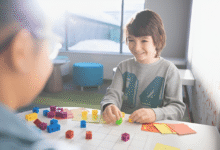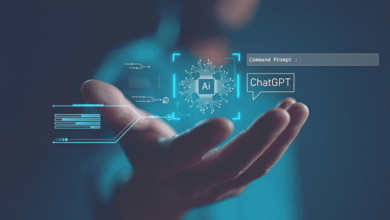Top SEL Strategies to Use in the Digital Classroom
SEL strategies for digital classrooms that boost emotional intelligence. Discover 10 proven techniques for effective online social-emotional learning.

Social-Emotional Learning (SEL) has become an essential component of modern education, especially in digital classrooms where students and teachers interact primarily through screens. As online learning continues to evolve, integrating SEL strategies ensures that students not only excel academically but also develop critical emotional and social skills. These practices help foster resilience, empathy, and self-regulation—key traits for success in both virtual and real-world environments.
The shift to digital classrooms presents unique challenges, such as reduced face-to-face interaction and increased screen fatigue, which can impact students’ emotional well-being. However, by embedding SEL Strategies into online lessons, educators can create a more supportive and engaging learning experience. From mindfulness exercises to collaborative digital projects, these SEL Strategies empower students to build strong relationships, manage stress, and stay motivated in a virtual setting. By prioritizing SEL Strategies in digital classrooms, teachers can nurture well-rounded learners who thrive both academically and personally.
Top SEL Strategies to Use in the Digital Classroom
Incorporate Mindfulness and Emotional Check-Ins
Starting each virtual session with a mindfulness exercise helps students transition into a learning mindset. Simple techniques like deep breathing, guided meditation, or journaling can reduce stress and improve focus. Additionally, conducting emotional check-ins through polls or chat features allows students to express their feelings, fostering a sense of belonging. Teachers can use tools like Google Forms or Mentimeter to gather anonymous responses, ensuring students feel safe sharing.
Foster Peer Collaboration Through Digital Platforms
Collaborative learning is a key component of SEL Strategies, promoting teamwork and communication. Platforms like Zoom breakout rooms, Google Jamboard, and Padlet enable students to work together on projects, discuss ideas, and provide peer feedback. Structured group activities encourage empathy and problem-solving skills. Assigning roles within groups (e.g., facilitator, note-taker) ensures equitable participation. By integrating SEL-driven collaboration, students learn to navigate conflicts, appreciate diverse perspectives, and build stronger relationships even in a virtual setting.
Teach Digital Citizenship and Empathy
With increased online interaction, teaching digital citizenship is crucial. Lessons on cyberbullying prevention, respectful communication, and responsible internet use align with SEL Strategies. Role-playing scenarios and case studies help students understand the impact of their online behavior. Encouraging empathy-building activities, such as writing reflective responses or discussing real-world issues, reinforces kindness and ethical decision-making.
Use Gamification to Boost Engagement and Resilience
Gamification enhances SEL Strategies by making learning interactive and motivating. Badges, leaderboards, and reward systems in platforms like Classcraft or Kahoot! encourage perseverance and a growth mindset. When students face challenges, game-based learning teaches resilience and adaptability. Incorporating team challenges and problem-solving quests fosters cooperation and emotional regulation.
Provide Personalized Feedback and Encouragement
In a digital classroom, personalized feedback is essential for emotional support. Instead of generic comments, teachers should highlight strengths and offer constructive guidance. Video or voice notes add a personal touch, making feedback more meaningful. Recognizing effort, not just achievement, nurtures self-confidence and motivation. When students feel valued, they are more likely to take academic risks and develop a positive self-image.
Integrate SEL-Focused Digital Storytelling
Storytelling is a powerful SEL Strategies that helps students process emotions and build empathy. Using tools like Flipgrid or Book Creator, students can share personal narratives, discuss challenges, and reflect on growth. Analyzing characters’ emotions in stories or creating digital journals enhances self-awareness and social awareness. This strategy makes SEL relatable and engaging for students of all ages.
Encourage Reflective Practices Through Digital Portfolios
Reflection is a core SEL Strategies that promotes self-improvement. Digital portfolios (using Seesaw or Google Sites) allow students to document their progress, set goals, and assess their emotional growth. Guided reflection prompts, such as “What was a challenge you faced this week?” or “How did you help a classmate?” deepen self-regulation and responsible decision-making.
Model Positive Behavior and Emotional Regulation
Teachers play a vital role in SEL by modeling emotional regulation and positive online interactions. Demonstrating calmness during technical difficulties or expressing gratitude in virtual discussions sets a strong example. When educators openly discuss their emotions and coping SEL Strategies, students learn healthy ways to manage stress and build resilience.
Create Virtual SEL Support Groups
For students needing extra emotional support, virtual SEL groups provide a safe space to discuss feelings and challenges. Using platforms like Microsoft Teams or Slack, small groups can meet regularly for guided discussions. These groups strengthen peer connections and ensure no student feels isolated in a digital classroom.
Partner with Parents for Consistent SEL Reinforcement
Establish Two-Way Communication Channels
Maintain regular contact through multiple touchpoints like monthly SEL newsletters, a dedicated class WhatsApp group for SEL tips, and quarterly virtual SEL workshops. Create a shared Google Drive folder with SEL resources, video demonstrations of techniques, and printable emotion-regulation tools parents can use at home. Implement a simple “SEL Check-In” system where parents can share observations about their child’s social-emotional development.
Provide Practical, Everyday SEL Activities
Equip parents with concrete tools like “SEL conversation starter cards” for dinnertime discussions, guided mindfulness scripts for bedtime routines, and weekly family challenges (e.g., “Practice active listening day”). Share short instructional videos modeling how to process emotions or resolve conflicts, using everyday situations parents encounter. Curate age-appropriate book lists and movie discussion guides that reinforce SEL competencies at home.
Develop Collaborative Tracking Systems
Co-create simple progress monitors like emotion-tracking charts or SEL skill rubrics that parents and teachers can both contribute to. Establish shared digital journals where families can document “SEL wins” and challenges to discuss during parent-teacher conferences. Provide parents with observational guidelines to help them recognize and nurture specific SEL skills development outside school hours.
Offer Flexible Support Options
Host “SEL Office Hours” at varying times to accommodate different schedules, offering both group Q&A sessions and private consultations. Record and archive all SEL parent workshops for on-demand viewing. Create tiered resources – from quick tips for busy families to in-depth guides for parents who want to dive deeper into SEL concepts and practices.
Celebrate Family Participation
Implement a recognition system for “SEL Champion Families” who consistently engage with the program. Feature family success stories in school communications (with permission). Organize occasional “Family SEL Showcase” events where students can present SEL skills they’ve practiced at home, strengthening the school-family connection.
Read More: Master New Skills with These Fast-Growing Online Learning Sites
Conclusion
Social-Emotional Learning (SEL) is no longer just an add-on but a fundamental necessity in digital classrooms, where meaningful connections and emotional well-being are crucial for student success. By implementing the SEL Strategies discussed from mindfulness exercises to collaborative digital projects educators can create an online learning environment that nurtures both academic growth and emotional resilience. These approaches help students develop essential life skills such as self-awareness, empathy, and responsible decision-making, preparing them for challenges beyond the virtual classroom.
As technology continues to reshape education, integrating SEL Strategies in digital classrooms ensures that learning remains holistic and student-centered. Teachers who prioritize these SEL Strategies not only enhance engagement but also foster a supportive community where every learner feels valued. By embracing SEL, educators can bridge the gap between virtual instruction and meaningful human connection, empowering students to thrive in an increasingly digital world. The future of education lies in balancing technology with emotional intelligence and SEL is the key to achieving that balance.
FAQs
What is SEL and why is it important in digital classrooms?
Social-Emotional Learning (SEL) helps students develop self-awareness, emotional regulation, and interpersonal skills critical for engagement and success in online learning environments where face-to-face interaction is limited.
How can teachers promote SEL in virtual settings?
Educators can integrate daily emotional check-ins, collaborative digital projects, mindfulness exercises, and structured peer feedback sessions using platforms like Zoom or Google Classroom.
What are some quick SEL activities for online classes?
Try 5-minute breathing exercises, virtual gratitude journals, emotion charades via webcam, or using reaction emojis for real-time emotional check-ins during lessons.
How does SEL benefit students in digital learning?
SEL strategies reduce digital fatigue, improve focus, build resilience to technical challenges, and create a stronger sense of classroom community in virtual spaces.
Can SEL be taught effectively without in-person interaction?
Absolutely digital tools like Flipgrid, Padlet, and breakout rooms allow for meaningful SEL development through video reflections, collaborative boards, and small-group discussions online.











